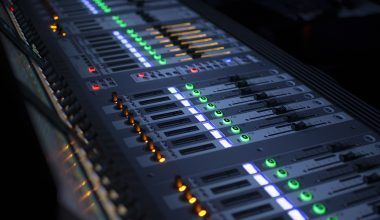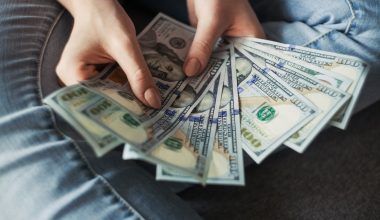Creating content for YouTube can be incredibly rewarding, not just creatively but also financially. Many aspiring YouTubers dream of earning from their videos, but the big question is: when do you start to get paid on YouTube? If you’re wondering how to go from uploading videos to actually earning money, you’re in the right place. Let’s break it down step by step in the simplest way possible.
Understanding the Basics of YouTube Monetization
Before we dive into the details, it’s important to understand how YouTube monetization works. YouTube offers creators the opportunity to earn money through its YouTube Partner Program (YPP). This program lets you make money through ads, memberships, Super Chats, and more. But before you start seeing dollars roll in, you need to meet certain requirements.
To become eligible for the YouTube Partner Program, here’s what you need:
- 1,000 subscribers: This might sound like a lot, but with consistent effort, it’s achievable.
- 4,000 watch hours in the last 12 months: Watch hours are the total amount of time people have spent watching your videos.
- AdSense account: You’ll need to create a Google AdSense account to receive payments.
- No community guideline strikes: Your content should follow YouTube’s policies.
Once you meet these criteria, you can apply for the program and, if approved, start making money.
when do you start to get paid on youtube?
The time it takes to start earning on YouTube varies for everyone. Some creators achieve the required subscribers and watch hours within a few months, while others may take years.
If you’re starting out, focus on creating engaging content and building a community. Try not to get discouraged by the timeline because consistency is key. Remember, every big YouTuber started from zero.
Ways You Can Earn on YouTube
Once you’re part of the YouTube Partner Program, your earning potential grows. But did you know there are multiple ways to make money on YouTube? Here are the main streams of income:
- Ad Revenue: This is the most common way YouTubers earn. When viewers watch or click on ads on your videos, you get a share of the revenue.
- Channel Memberships: Fans can subscribe to your channel for exclusive perks if you enable memberships.
- Super Chat and Super Stickers: During live streams, viewers can pay to have their messages highlighted.
- Merchandise Shelf: Promote and sell your merchandise directly through your channel.
- Sponsored Content: Brands may approach you for paid partnerships if your channel grows.
How Much Can You Earn on YouTube?
Your earnings depend on several factors, such as your audience size, engagement, and niche. For example, channels in lucrative niches like technology or finance often earn more than those in general entertainment.
You also get paid based on CPM (Cost Per Mille) or RPM (Revenue Per Mille). CPM refers to how much advertisers pay per 1,000 ad views, while RPM is how much you earn after YouTube takes its cut. On average, CPM can range from $2 to $5, but it varies widely based on your audience and content type.
Tips to Reach the Monetization Threshold Faster
- Post Consistently: Regular uploads keep your audience engaged and help you grow your watch hours.
- Focus on SEO: Use the right keywords in your titles, descriptions, and tags to make your videos easier to find.
- Engage With Your Audience: Reply to comments and encourage viewers to subscribe.
- Create Quality Content: Invest in good lighting, sound, and editing to keep viewers coming back for more.
- Promote Your Videos: Share your content on social media platforms to reach a wider audience.
How to Set Up Your AdSense Account
Once you meet the requirements, setting up an AdSense account is the next big step. Here’s how to do it:
- Log in to YouTube Studio.
- Go to “Monetization” in the left-hand menu.
- Follow the prompts to create or link your Google AdSense account.
- Add your payment information, including bank account details for direct deposits.
YouTube pays creators monthly, but you’ll only receive a payment if your earnings exceed $100. If you don’t hit this threshold, your balance rolls over to the next month.
How to Maintain Monetization on YouTube
Earning money on YouTube is exciting, but it’s also crucial to maintain your monetization status. Here are some tips to stay in the program:
- Avoid uploading copyrighted content.
- Follow YouTube’s community guidelines and advertiser-friendly policies.
- Stay active and continue posting videos.
What If You Don’t Meet the Requirements?
If you’re struggling to reach 1,000 subscribers or 4,000 watch hours, don’t worry. Many creators build their audience over time. In the meantime, you can explore other ways to earn money, such as:
- Affiliate Marketing: Promote products in your videos and earn a commission.
- Crowdfunding: Use platforms like Patreon to get support from your fans.
- Selling Digital Products: Offer courses, ebooks, or presets related to your niche.
Final Thoughts: Keep Your Eyes on the Prize
Starting a YouTube channel and reaching the monetization threshold requires patience and effort. However, if you stay consistent and create content you’re passionate about, the journey becomes a lot more enjoyable.
So, when do you start to get paid on YouTube? The answer depends on how quickly you can meet the requirements and join the YouTube Partner Program. But one thing’s for sure: with hard work, you can turn your channel into a source of income and a creative outlet you’re proud of.
Keep going, keep creating, and you’ll get there!
For further reading, explore these related articles:
- Exploring the Power of Streaming Songs in the Digital World
- Best Hip Hop Albums Ever: A Celebration of Music, Stories, and Culture
For additional resources on music marketing and distribution, visit DMT Records Pvt. Ltd.






